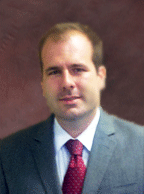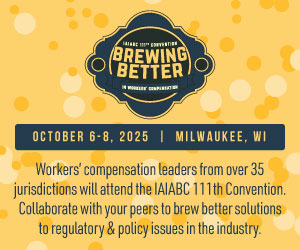Industry Insights
April 27, 2021
Burns: AOE/COE and After-Hours Industrial Injuries
- State: California
- - 0 shares
In today's COVID environment, many employers have provided a large degree of flexibility for their employees to work from home or, alternatively, return to the office on a part-time basis.

Michael P. Burns
Many businesses are now reopening, albeit slowly and cautiously, and employees are being given the choice whether to work from home or at their employer's facility. This is particularly true for white-collar jobs, such as clerical employees.
But what happens when an employee elects to come back to work on his or her own schedule? For example, when an employer allows employees to either work from home or at the office, this may create situations where employees are unexpectedly at the place of business at odd hours, including weekends and evenings.
There may be claims for injuries sustained at the place of business after employers have allowed their employees to work at the office on their own time schedule. This will undoubtedly create concerns for employers when injuries occur during odd hours.
A 2014 Workers' Compensation Appeals Board panel decision provides a good primer for these situations. In the case of Campos v. University of Southern California (2014), the applicant was employed as a custodian. She began her shift at 8 a.m., and it ended at 4:30 in the afternoon. She went home at the usual time, only to return to the workplace later that night at around 9 p.m. to retrieve her husband's keys that she had left in a jacket pocket.
To get into the workplace, she used an employer-provided card that granted her access to the building outside of her regular shift. The employer had issued the card because she was sometimes called to work during emergencies.
While she had not been called to work that evening, applicant entered the maintenance room to retrieve the keys and was assaulted by a co-worker. She filed an application alleging injury on an industrial basis. The case went to trial and the judge found that applicant did not sustain injury AOE/COE.
The WCAB affirmed, noting that for an injury to occur in the “course of employment,” the employee must be engaged in the work he or she has been hired to perform and it must occur within the “period of his employment.” The course of employment is limited by time as well as by space, and employment includes not only the doing of the work but a reasonable margin of time and space necessary to be used in passing to and from the place where the work is to be done.
The WCAB held that “injuries taking place when a worker has re-entered the job site for a personal motive, after his or her workday has ended, have been held to be outside the course of employment.”
Applicant’s motives for returning to the job site were purely personal in that she wanted to recover her husband's keys. The WCAB also held that applicant's “on-call” status did not, in and of itself, place her in the course of employment.
When evaluating claims from applicants who are alleging injury on their employer's work site during non-work hours, careful attention should be paid to the employer’s instructions concerning returning to work. For example, if employees are prohibited from entering the facility after a certain time in the evening, this may be a valid basis for denying the claim.
In today's environment, many employers are allowing great flexibility to employees to return to the office whenever they feel comfortable. The first point of contact in evaluating these types of claims is the employer's human resources department. Careful attention should also be paid to the employer's handbook and policies. The employee’s supervisor should also be contacted, as the applicant may allege there was some expectation or understanding that the office could be used during non-work hours, such as in the evening or on the weekend.
An applicant who is injured at the employer’s facility during non-work hours will likely allege that he was at the facility to work. However, careful investigation can reveal that there may be nonindustrial motivations for returning to the office.
An employee who elects to return to the office in the evenings or during the weekends due to a fear of COVID-19 may be able to present a successful claim if there is express or implicit permission from the employer to work at the office at his own convenience.
Before the pandemic began, these types of cases were not frequently seen, but restrictions imposed on employers for reopening their businesses, and safety protocol at offices, may result in situations where employees feel free to work at the office at their own convenience and on their own schedule. The place of business in the post-COVID world is certainly not the same as before, and the WCAB will certainly be addressing these issues in the future.
Michael P. Burns is a partner at Bradford & Barthel’s San Jose location. This entry from Bradford & Barthel's blog appears with permission.
Advertisements
Columns
- Montgomery: State's Mandatory E-Billing Process Arrives 08/04/25
- CAAA: Audit Exposes Deep Failures at Cal/OSHA 07/30/25
- Paduda: Work Comp Remains the Darling of P&C Industry 07/28/25
- Wroten: The Flip Side of Regulations 07/25/25
- Moore: Were We Right About Comp in 2022? 07/23/25
- Kamin: WCIRB Says Carriers Losing Money Due to Rising Costs 07/21/25
- Paduda: What's Happening in Golden State Work Comp? 07/18/25
- CAAA: Fireworks Warehouse Blast Exposes Flaws in Safety, Oversight, Accountability 07/16/25
- Gelman: Asbestos Ban Is a Win for Workers 07/14/25
- Snyder: Mediation Confidentiality 07/11/25
- Snyder: Settle and Sue: Don't Let It Happen to You 07/09/25
- Kamin: State Senate Committee to Consider SIBTF Bill 07/07/25
- Anders: Self vs. Professional MSA Administration: Which Is Right for the Injured Worker? 06/30/25
- Geaney: Court Affirms Finding of Police Officer's Joint Employment 06/27/25
- Fricker: A New Era for Comp Subrogation 06/25/25
- Kamin: AI for HR Equals Bad Injury Reporting 06/20/25
- Montgomery: Will DWC Ignore New Law? 06/18/25
- Kamin: 4th DCA Clarifies DOI From Date of Knowledge 06/16/25
- Wade: Are the Old Ways Gone? 06/13/25
- Snyder: Trust Your Intuition 06/12/25
Now Trending
- Workers' Compensation News
-
Calif. Appeals
Court Upholds $1M Jury Award in
Wrongful Death…
Posted on Jul 30, 2025
-
Calif. Division
Revising UR Rules Rejected by…
Posted on Aug 5, 2025
-
Calif. Company
Settles Allegations of
Misclassifying Franchisees as…
Posted on Jul 29, 2025Richard Harrington says: “Like an independent contractor, wouldn't a franchisee also be responsible for setting…”
-
Calif. Two Charged
in Fatal Workplace Exposure at
Illicit Cannabis…
Posted on Aug 5, 2025
-
Calif. Auditor:
Understaffing, Process Deficiencies
Hamper Enforcement of Worksite…
Posted on Jul 31, 2025
-
Calif. WCIRB
Releases 2025 Edition of
Interactive Industry…
Posted on Aug 4, 2025
-
Calif. WCIRB
Announces 2025 X-Mod…
Posted on Jul 29, 2025
-
Pa. Bill Would
Require Up to $250 per Month for…
Posted on Aug 5, 2025
-
N.Y. IG Announces
Conviction of Double-Dippers…
Posted on Aug 1, 2025
-
Pa. Court Upholds
Denial of Worker's Petitions for
Reinstatement,…
Posted on Aug 4, 2025
Jobs
Upcoming Events
Aug 26, 2025
Claims Association of Greater
Join the Claims Association of Greater Chicago (CAGC) for a day of golf, networking, and fun at Th …
Sep 2-4, 2025
San Diego Elevate Workers' Com
We are thrilled to announce that Early Bird registration is OPEN for ELEVATE® 2025! This year's …
Nov 7, 2025
WIMAH 2025 Workers’ Compensati
Join Hawai'i’s premier workers’ comp event for expert insights, top-tier networking, and standout …
Social Media Links
c/o Business Insurance Holdings, Inc.
Greenwich, CT 06836




No Comments
Log in to post a comment